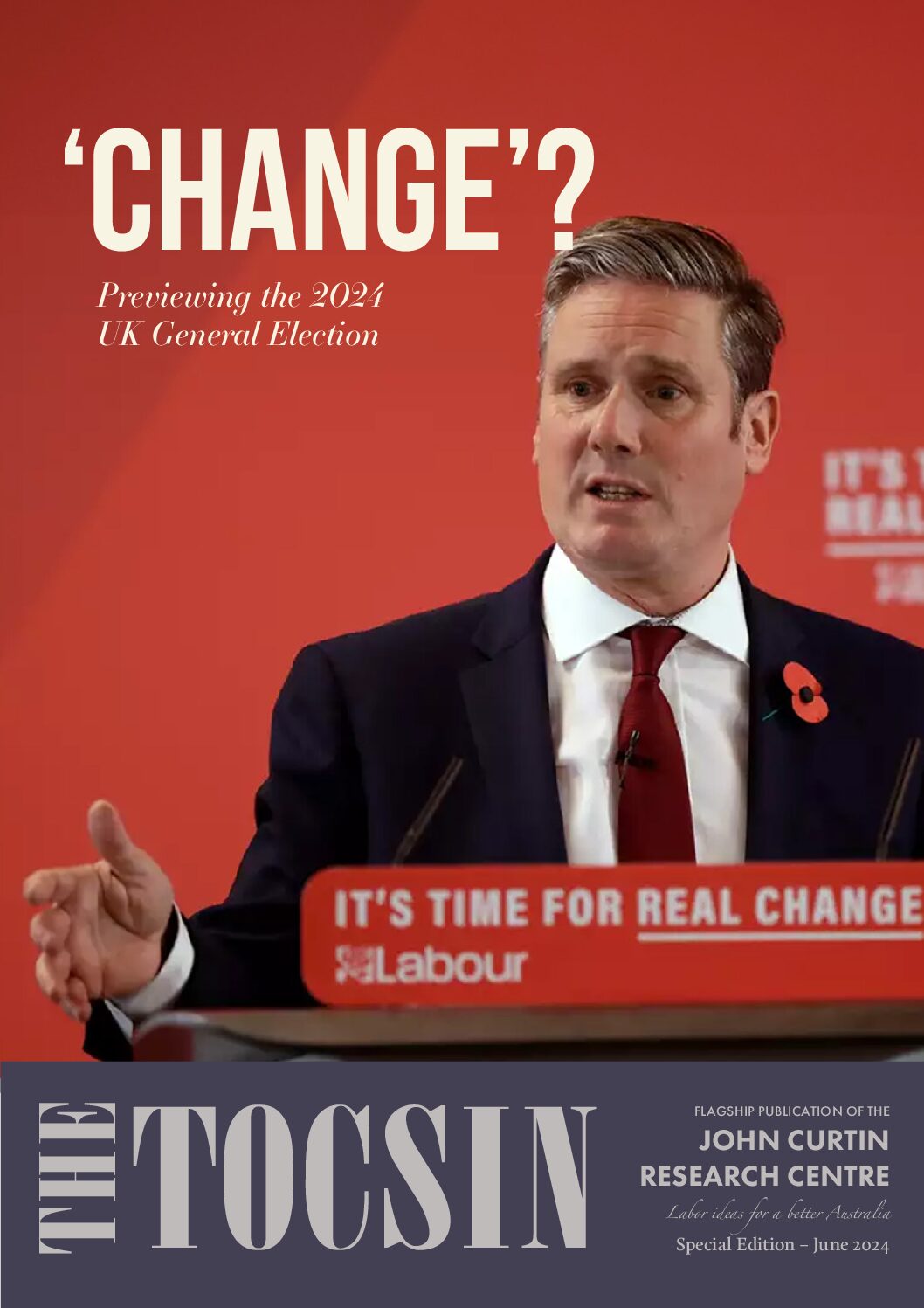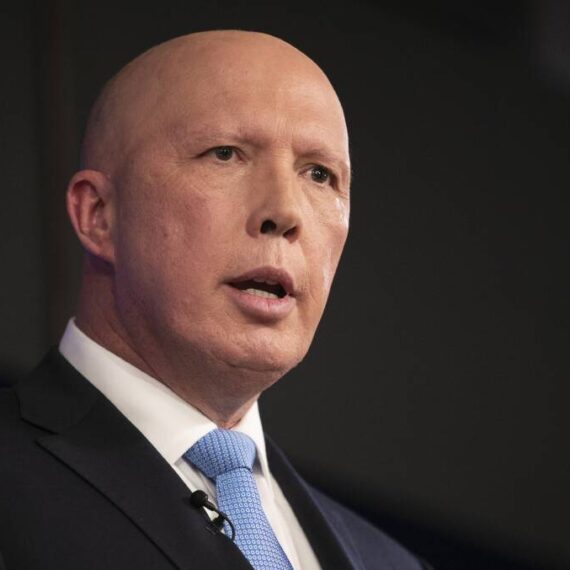An Albanese Labor Government seemed an immensely unlikely prospect before summer of 2020-21. In April 2021 Peter Van Onselen and Wayne Errington’s published a book, How Good is Scott Morrison? confidently predicting a Coalition victory at the next election, that Morrison had “the next election in the bag”. But given the timelines involved in producing a book, these words would have been written earlier: by the time they appeared in print, this judgement was already out of date. When an extract of How Good is Scott Morrison? appeared in the Australian, it was quietly edited to indicate that Morrison’s slowness in responding to women’s concerns and his botched vaccine rollout “left him more vulnerable as a political leader than at any time during his prime ministership”. A summer of further lockdowns followed by a shambolic vaccination program had Labor poised for victory by the summer of 2021-22, when a shortage of testing kits drew further attention to Morrison’s deficiencies.
Labor’s mandate at the 2022 election was a muted one. It had eschewed the larger target provided by Bill Shorten in 2019. But it was not devoid of content either. There was a large commitment to childcare and there were more ambitious targets for the transition to renewables. Albanese sometimes spoke a language of universal provision that recalled Whitlam: we were perhaps reminded that his political mentor and early employer was Tom Uren, a left-wing member of the Whitlam government. But Labor’s primary vote ended up only in the low 30s. The story of the election seemed less about Labor than the Teals and the Greens. But once the balloons and streamers are gone, it matters a great deal who is in government and is not. “A win is a win”, Tanya Plibersek said on election night, when asked on TV about Labor’s low primary vote.
Election night began at Albanese’s Marrickville home, with Penny Wong, a factional colleague, close confidant and shadow foreign minister, present. She would later introduce Albanese when he made his victory speech. As he had done on several occasions in the campaign, Albanese spoke feelingly of his upbringing, and he committed his government to the full implementation of the Uluru Statement from the Heart, which called for a First Nations Voice to Parliament, a treaty and truth-telling.
The large size of the crossbench in the new parliament – 17 in a House of 151 – was widely interpreted as a symptom of disillusionment with the old parties and an old politics. Albanese, a Labor factional warrior from way back, in some ways seemed an unlikely bearer of a new one. But he had come a long way from the time of his 1998 excoriation of John Howard on the floor of parliament as the latest in the Liberals’ “pantheon of chinless blue bloods and suburban accountants”. Albanese could now have passed for a suburban accountant himself.
Still, he hit the ground running. He and four colleagues were sworn in the following Monday, just ahead of an overseas visit to Tokyo for the Quadrilateral Security Dialogue (“The Quad”) with Japan, India and the United States, the latter represented by President Joe Biden. High in the government’s early priorities was repairing Australia’s international relationships, with France – which resented Morrison’s double-dealing over the purchase of submarines – as well as with China, which had placed relations with Australia in the deep freeze over various matters. Albanese – as well as his foreign minister Wong and deputy and defence minister Richard Marles – spent a good deal of time overseas in the early weeks of the government in a period of considerable international turbulence following Russia’s invasion of Ukraine in February. Wong visited several Pacific nations in an effort widely seen as an attempt to counter Chinese influence in the region. Albanese undertook a tightly controlled visit to Ukraine himself.
Rising inflation, accompanied by climbing interest rates, contributed to the most serious cost of living crisis in three decades. Energy prices, stimulated by the war in Europe, were particularly troublesome, especially in light of Labor’s pre-election commitment to get prices down. After a tussle between the minister, Chris Bowen, and energy companies extending over several months, in December 2022 the government used its powers to intervene directly in the energy market to cap coal and gas prices. An October budget delivered by the Treasurer, Jim Chalmers, advanced implementation of election commitments in areas such as the extension of paid parental leave, higher subsidies for childcare, and more social and affordable housing. The parliament also agreed to industrial relations reforms intended to strengthen enterprise bargaining and boost wages, especially for women. A bill for the long-anticipated and long-delayed federal anti-corruption commission passed before Christmas.
In the first year of the government, there were consultations and enquiries across a wide range of areas, including a Royal Commission into Robodebt – the Coalition government’s illegal effort to steal money from welfare recipients by raising fictional debts against their names. The testimony it heard served as a reminder of failures of the previous government and the incapacities of the senior ranks of the public service. The Reserve Bank, criticised for its recent interest rate hikes after its governor had earlier given the impression an increase was unlikely before 2024, was also the subject of an enquiry, as was Australia’s immigration system and the National Disability Insurance Scheme. There was a consultation on a proposal for an Australian Universities Accord, and another on cultural policy that led to the launch of Revive in late January 2023, followed by a major financial boost to the national collecting institutions. The parliament also found time for a two-week period of mourning following the death of Queen Elizabeth II, while Albanese travelled to London for the coronation in May 2023.
The emphasis in all this, however, was on order, regularity and trust – a rebuke to the Morrison government but also, arguably, to the Rudd and Gillard era. Albanese had some of the instincts of the “lone wolf”, as the journalist Katherine Murphy put it, but his approach in both opposition and government became increasingly collaborative. He relied on the competence of a strong frontbench, and he made it clear that he wanted to re-establish the ALP as the natural party of government, in line with Bob Hawke’s approach in the 1980s. Like Hawke, he seemed prepared to allow ministers to get on with things in their respective portfolios.
Like Hawke, Albanese would be criticised for being too moderate, too cautious in pushing back on Coalition-era initiatives, too attached to old ways of doing politics. Several of the new independent parliamentarians expressed outrage when the government reduced their staffing entitlements. There were also criticisms, from the outset, that the middle path Albanese and Labor had sought to tread on the shift from fossil fuels to renewables lacked sufficient ambition. In its defence policy, the government added crucial detail to the bare bones of the Morrison government’s AUKUS agreement with expensive plans for the purchase and manufacture of nuclear-powered submarines. The critics, which included former Prime Minister Paul Keating, argued that the government was surrendering Australia’s sovereignty to the United States, an accusation that Albanese and Marles denied.
The government ended temporary protection visas for asylum-seekers, thereby offering them a pathway to fuller participation in the life of the nation, and it established a pathway making it easier for New Zealanders to become citizens. Critics, however, pointed to the retention of off-shore detention of asylum-seekers who had languished for years. The government initially displayed little interest in increasing the pitiful unemployment benefit, JobSeeker, not even after one of the advisory committees that it established, that on economic inclusion, recommended an increase. Yet it was committed to fulfilling its pre-election promise not to dismantle the Morrison government’s Stage 3 tax cuts, despite the windfall they would offer the super wealthy. Albanese wanted to avoid being considered either as breaking a core election promise or as guilty of profligacy.
In one area in particular, however, Albanese’s approach seemed to owe more to Whitlam-era idealism than the more cautious and pragmatic Hawke tradition. The Albanese government’s commitment to holding a referendum on the First Nations Voice to Parliament before the end of 2023 remained steadfast, even as an otherwise demoralised opposition, led by Peter Dutton, did its best to use obstructionism as a means of reviving the coalition’s political fortunes. These had declined to alarming levels for the Liberal Party especially, and voters were unimpressed by the federal coalition’s attempts to lay blame for the nation’s difficulties, such as the rising cost of living, at Albanese’s feet. At a by-election on 1 April 2023 for the outer-suburban Melbourne seat of Aston, long held by the Liberals and recently vacated by scandal-plagued ex-minister Alan Tudge, Labor won a two-party preferred swing of over six per cent. It was the first time since 1920 that a federal government had managed to win a seat from the opposition in such circumstances.
It was hard to avoid seeing in it some kind of verdict on the first few months of the Albanese government. Commentators have written of a sense that the country was again being run by “adults”. Albanese’s own image as a likable, trustworthy and competent leader contributed something to that impression. The government’s second budget – delivered by Jim Chalmers in May 2023 – reinforced the image of a cautious government seeking to achieve a balance between the diverse constituencies that helped it into office in 2023, and which it will need to keep onside to be re-elected. Following widespread reports that the government would only increase JobSeeker for people aged over 55, there was in the end also a minor improvement – of $40 a fortnight – for younger claimants. There was also a strengthening of bulkbilling of Medicare and energy bill relief, all geared to those most vulnerable to cost-of-living pressures. The government also reversed a welfare policy that sought to force single parents back into the workforce once their youngest child had turned eight: the threshold was now raised to fourteen.
Despite Chalmers delivering the first surplus for a decade and a half, critics from the right raised the spectre of worsening inflation, while those from the left argued that abandonment of stage 3 income tax cuts would have allowed the government to lift the unemployment benefit back above the poverty line – that is, to where the Morrison government lifted it during the pandemic. The government was unmoved by such claims, regarding the dropping of the tax cuts as likely to undermine voters’ trust, considering the party’s commitment before the 2022 election. Instead, it pointed to the relief to low income-earners offered by the combination of measures around health, energy and welfare.
Rather, for the time being, this government’s “story” is of the return of orderly government, and that is appealing to voters who were sick of having Morrison and his army of fourth-rate ministers in their faces. The revelation soon after the 2022 election that Morrison had during the pandemic secretly had himself appointed by the governor-general to five ministries in addition to the prime ministership underlined the sense of norms, conventions and even sanity having been restored (and Albanese moved to legislate to prohibit any repetition of that affair).
We do not yet know if Albanese will be a short- or long-term leader – the last in the procession of 2-to-4-year prime ministers we have had since Howard, or a more enduring proposition. His age works against Howard-like longevity, but he could emulate Hawke’s eight years. His ambition is clearly for at least a couple of terms, and the problems of the Liberal Party following the 2022 election and a succession of humiliating failures in state elections augur well for federal Labor’s, and Albanese’s, prospects. Coming to the prime ministership at 59, as did Ben Chifley, on assuming office Albanese was a little older than Harold Holt and a little younger than Malcolm Turnbull. Of these, only Holt had comparable longevity in parliament before reaching the top job.
What are we to make of this first year if seen in wider perspective? Governments often falter early on. The first year of the Whitlam government was marred by the scandal created by his Attorney-General Lionel Murphy’s raid on ASIO’s office in Melbourne, as well as by rising inflation – to which the government responded with a widely-criticised 25% tariff cut. Hawke’s first year is often recalled as a triumph but there was a major spy scandal which resulted in the loss of one of his ministers, Mick Young, along the way. It was not long before critics within the party and outside it on the left were complaining that it was too cautious and pragmatic, both in domestic economic policy and in foreign affairs. John Howard’s first year included the loss of ministers in various scandals – and the stalking of the government by Pauline Hanson. Kevin Rudd was being accused in the media of running a chaotic government within a year of his election victory.
By comparison, Albanese’s has been a remarkably clean first year, unworried by any kind of scandal or major error. Its image has been greatly enhanced by the juxtaposition of Morrison and the Coalition offered by the royal commission on Robodebt and the secret ministries revelation. This has been critically important: Rudd erred when he talked big about scandals in the Howard government such as the Australian Wheat Board’s payment of bribes to the Iraqi government but failed to follow up with enquiries when in government. It was also a major error to have no enquiry into the Iraq war. By way of contrast, the Albanese government has provided many opportunities for reminders of the failures of its predecessor.
The Albanese Labor government has benefited from the crisis in the Liberal Party. The Coalition seems to be a long way from a return to office because it faces a massive crossbench, most of which has been carved out of its traditional heartland. The Liberals are now largely confined to the occasional outer-suburban or regional seat. The Nationals are a larger portion of the Coalition, and accordingly better able to dictate terms that alienate the Liberal Party from those heartland seats it has lost to independents and, in Brisbane, to the Greens. Labor therefore has advantages that it has not enjoyed since the Hawke era. The prospects of an extended period in government are fair. The main dangers lie in the economy, which may well fall into a recession, in ministers becoming atomised and isolated in their portfolio work, and in old-fashioned political miscalculation. For the time being, voters are disinclined to blame Albanese’s government for the cost of living, but that time may eventually come.





